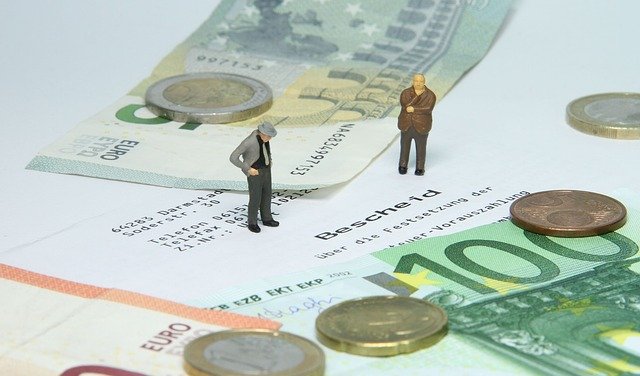
Thinking about filing bankruptcy?
You’re not alone. Bankruptcy filings in the United States have risen 14.2% in 2024 compared to last year, so more people than ever are trying to find out their debt relief options. But the problem is…
Misinformation.
There’s a ton of misinformation floating around about bankruptcy and debt relief that prevents people from getting the help they need. And some of these myths could be costing you money.
In this article, we’ll go over some of the most common misconceptions about bankruptcy services and debt relief so you can make informed decisions about your financial future.
Here’s what you’ll discover:
- The Truth About Your Credit After Bankruptcy
- What Really Happens To Your Assets
- Bankruptcy Myths That Cost You Money
- Understanding Your Debt Relief Options
The Bankruptcy Stigma Nobody Talks About
Let’s get one thing straight…
Filing for bankruptcy is not an admission that you’re bad with money. In fact, 78% of people who file for bankruptcy cite income loss as their leading cause of bankruptcy. The next most common cause of bankruptcy, medical issues, is something another 65% of filers cite.
These are not character flaws. These are life circumstances.
Job loss, medical emergency, divorce – these are the true reasons people file for bankruptcy. Many people seeking debt relief solutions work with specialized professionals like Arkansas Probate Lawyers who can help with both bankruptcy services and the broader financial management challenges that can accompany debt during difficult financial times.
If you’re drowning in debt right now, don’t let shame prevent you from exploring your options.
Myth #1: Bankruptcy Ruins Your Credit Forever
Here’s one of the biggest misconceptions out there…
People think filing for bankruptcy ruins your credit for the rest of your life. But that’s just not true.
Chapter 7 bankruptcies remain on your credit report for 10 years. Chapter 13 bankruptcies? Seven years. So even in the worst-case scenario, you’re only out a decade of good credit.
What most people don’t realize is that many bankruptcy filers get credit card offers within months of their discharge. These will be secured cards with low limits at first. But the point is – you can begin rebuilding your credit right away.
If you’re drowning in debt right now, chances are your credit is already shot due to late payments and high utilization. Bankruptcy may not hurt your credit score as much as you think it will.
Myth #2: You’ll Lose Everything You Own
Here’s the one that scares people the most.
Filing for bankruptcy means losing your home, car, and everything else you’ve worked hard to build. But here’s the truth…
Most people don’t lose anything at all in bankruptcy.
Bankruptcy laws are designed with generous exemptions that protect your essential assets. Your home, vehicles, clothing, personal belongings – they’re all typically exempt. Bankruptcy exemptions vary by state, but they all have one goal in common – to give you a fresh financial start, not leave you penniless.
Even the things that aren’t exempted usually have no value to creditors. Your furniture, electronics, and personal items? Creditors aren’t interested in that. They want to get liquidated assets, and most people simply don’t have much of those.
Myth #3: Bankruptcy Eliminates All Your Debts
Wouldn’t that be nice?
If only bankruptcy was that simple. It’s not. Bankruptcy does not wipe away all your debts, especially those that are considered non-dischargeable. You’ll still be responsible for these even after your bankruptcy discharge.
Here are the debts that will generally stick with you:
- Student loans (unless you can prove undue hardship)
- Child support and alimony
- Most tax debts
- Debts from fraud, willful injury, and DUIs
- Court fines and penalties
This is why you must understand exactly what bankruptcy can and can’t do for your specific situation. A bankruptcy attorney consultation is key to laying out which debts can be wiped away.
Myth #4: Both Spouses Must File Bankruptcy
Not necessarily.
If you’re married and only one spouse is the debtor in a bankruptcy case, only that spouse needs to file. It’s important to note that in this scenario, only the debtor spouse’s debts and assets are considered in the bankruptcy. So the non-filing spouse’s credit and assets are fully protected.
However, if the debt is joint or both spouses have significant debt, it’s usually best that both file for bankruptcy together. Otherwise, the non-filing spouse may still be held fully responsible for the entire debt.
Understanding Your Real Debt Relief Options
Bankruptcy is not the only solution to insurmountable debt.
There are several debt relief strategies, and the right one for you depends on your particular circumstances. Here are your main options:
Debt Consolidation: Rolling multiple debts into a single loan with a lower interest rate.
Debt Management Plans (DMPs): Working with credit counselors to make structured repayment arrangements.
Debt Settlement: Negotiating with creditors to pay a lump sum that’s less than the full amount owed.
Chapter 7 Bankruptcy: Liquidating non-exempt assets to discharge unsecured debts.
Chapter 13 Bankruptcy: Entering a 3-5 year repayment plan to catch up on missed debts while keeping your assets.
Each of these strategies has pros and cons. Debt consolidation and DMPs hurt your credit less but usually require a regular income. Bankruptcy can provide the most robust legal protection but will stay on your credit report for longer.
Myth #5: Debt Relief Is A Scam
Let’s address this head-on…
Are there predatory debt relief companies out there? Yes, of course. But that doesn’t mean all debt relief companies are scams.
How to spot the real ones:
- They’re transparent about fees
- They’re accredited by industry organizations
- They don’t charge fees before debts are resolved
- They don’t make unrealistic promises
Fact – It’s actually illegal for debt relief companies to charge fees before successfully negotiating a settlement. If they ask for payment before the debt is resolved, run.
Myth #6: You Can’t Get Credit After Bankruptcy
Wrong again.
Getting credit after bankruptcy is difficult, but not impossible. And the challenge is only temporary.
What happens after bankruptcy in terms of credit?
You can qualify for an FHA loan within 1-2 years after filing for bankruptcy. Credit card offers start coming within months. Yes, the terms won’t be good at first. But with responsible use, your credit score can recover pretty quickly.
When Should You Consider Bankruptcy?
Bankruptcy is a last resort but not something to be feared.
Sit down and have an honest conversation with yourself about whether it might be time for bankruptcy if:
- You’re being sued by creditors
- Wage garnishment has started
- You can’t make minimum payments on debts
- Your debt is more than your annual income
The most important step is to talk to a bankruptcy attorney. They can help you evaluate your specific situation and recommend your best options. Most offer free consultations, so there’s no risk in exploring your options.
Putting It All Together
Bankruptcy and debt relief services aren’t the scary monsters people like to make them out to be.
Yes, they have consequences. But those consequences also provide real relief for people who are drowning in debt through no fault of their own. The misconceptions and myths surrounding bankruptcy do far more harm than the bankruptcy itself.
Remember these key points:
- Bankruptcy does not ruin your credit forever
- Most people get to keep their essential assets
- Not all debts can be discharged
- There are multiple debt relief options available
- Legitimate help is available
Bankruptcy filings are expected to continue rising due to economic pressures. So understanding your options has never been more important. Don’t let misconceptions prevent you from getting the financial relief you need.








